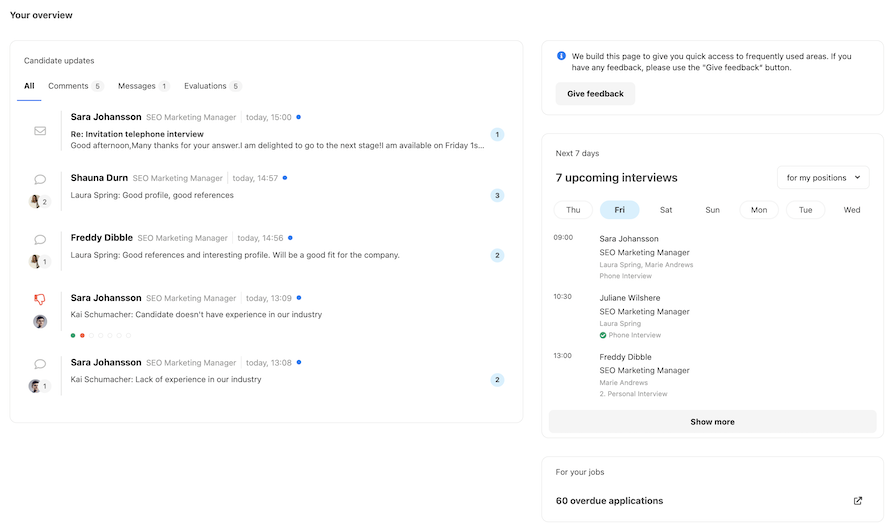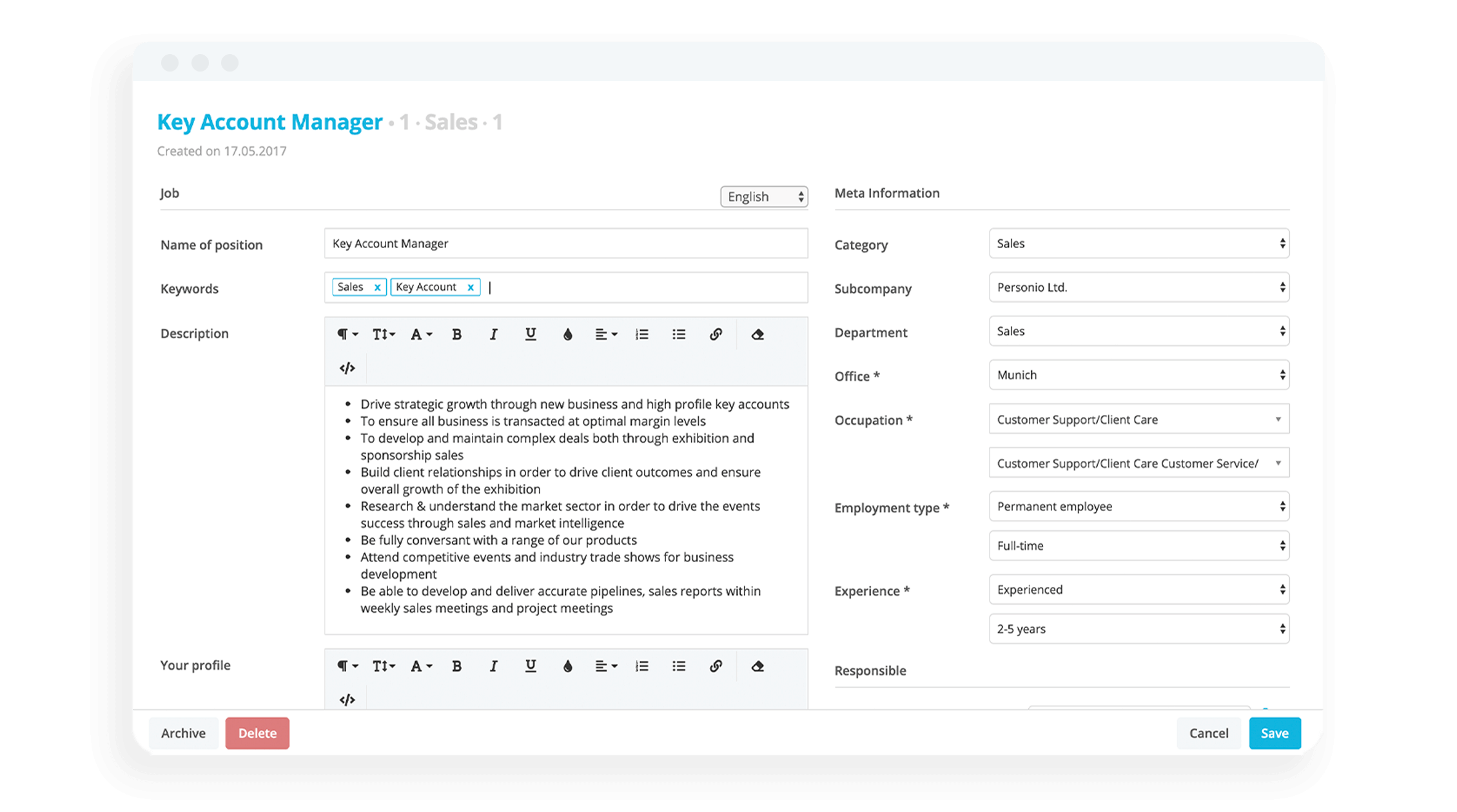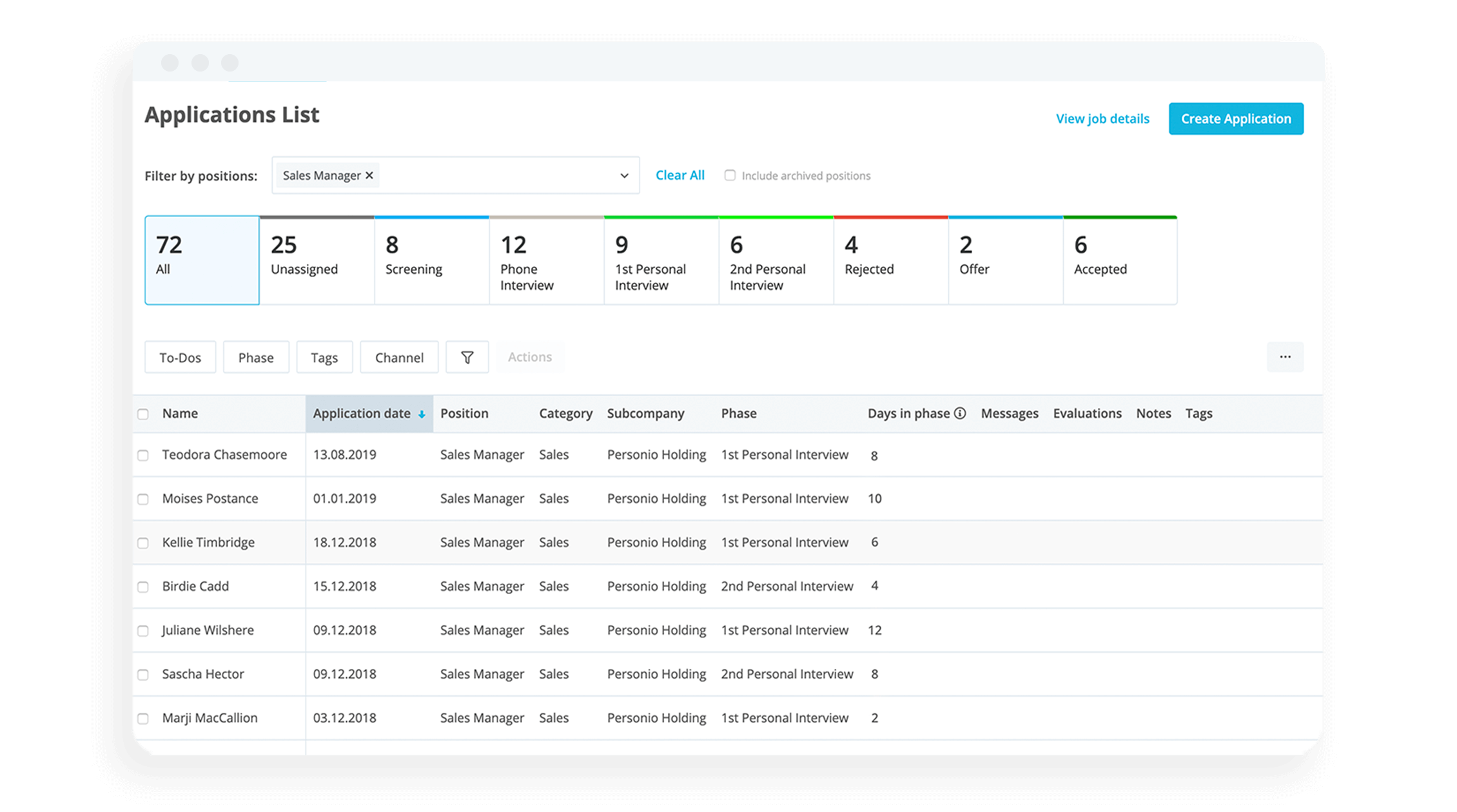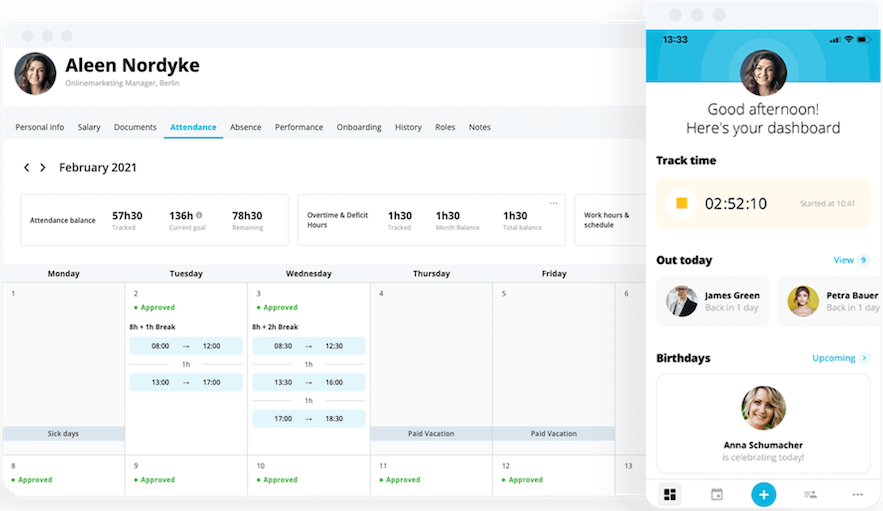
Streamline your hiring process
Explore effective strategies to enhance your recruitment process and attract top talent.
Read our guideRecruitment and Selection Process: Best Practices & Overview

A well-designed recruitment and selection process allows organisations to both attract a wide pool of applicants and narrow the selection down until you’ve found the perfect candidate for every opening.
In this post, we’ll explain the differences between recruitment and selection, explore why these two phases of the hiring process are so important and share the main steps that are involved.
Key takeaways:
Recruitment and selection are two key parts of the hiring process that allow companies to find and attract the best talent.
Recruitment involves getting a job description in front of as many people as possible. Selection involves narrowing down the pool until you’re left with the best person for the role.
The recruitment and selection process involves six main steps: creating a job description, advertising the role, screening candidates, conducting interviews, carrying out tests and assessments and selecting the successful candidate.
Contents
- 1What is recruitment?
- 2What is selection?
- 3What is the difference between recruitment and selection?
- 4Why optimal recruitment and selection is important
- 56 steps in the recruitment and selection process
- 6How does recruitment and selection work in nonprofits?
- 7Source, attract and hire candidates with Personio
What is recruitment?
Recruitment is the process that organisations use to source, attract and identify candidates for their open positions. The goal of recruitment is to gather as many suitable candidates for the role as possible (through as many fitting recruitment methods as possible).
Broadly speaking, there are two types of recruitment:
External recruitment: This is when recruiters search for candidates from outside of their organisation. They might do this by posting on job sites, using social media or posting job descriptions on their own career site. External recruitment can also involve contacting passive candidates — those who aren’t actively looking for work.
Internal recruitment: This involves looking for candidates who already work for the organisation in a different role. Many companies choose to advertise the job internally before opening up the search to external candidates. This can allow them to save money since it typically costs less to promote someone than to hire a new candidate.
What is selection?
Selection is the process of assessing candidates’ qualities, expertise and experience to narrow down the pool of applicants until you’re left with the best person for the role. This process usually involves conducting interviews and using various tests and assessments to evaluate each candidate.
Why does recruitment and selection matter?
An effective recruitment and selection process allows companies to source, attract and identify the best candidates for every open role. This can help to reduce attrition, increase productivity and even improve the company’s bottom line.
What is the difference between recruitment and selection?
Recruitment and selection are two different stages in the hiring process. Recruitment involves getting the job description in front of as many potential candidates as possible.
Selection is about narrowing down the pool of applicants until you’re left with the strongest candidate. Here are some of the main differences between recruitment and selection:
Recruitment | Selection |
First stage — introduces the role to suitable candidates | Second stage — in-depth analysis of each candidate |
Positive process — the aim is to attract as many candidates as possible | Negative process — the aim is to reject candidates from the list until you’re left with just a few |
A simpler process — recruiters must simply create an appropriate job description and publish it in the right places | More complex process involving various tests and phases — recruiters must carefully scrutinise each application to identify the best candidates |
Usually not time-consuming or expensive | Can be time-consuming and expensive |
Only involves communication of vacancies — no contractual relationship is established | Involves the creation of a contractual agreement between the company and the successful candidate |
Why optimal recruitment and selection is important
Here are four reasons why an optimal recruitment and selection process is key to an organisation’s success:
1. Allows you to attract the best talent
An effective recruitment process connects you with top candidates. This is particularly important when you remember that around 70% of the workforce is made up of passive candidates, who probably wouldn’t come across your job openings without active engagement from your recruitment team.
And it’s not just about finding the right candidates: a 2019 study found that almost half of jobseekers in high-demand industries had turned down a job offer because of a poor recruitment experience. A solid recruitment and selection process can help convince top candidates that you’re the right company for them.
2. Reduces turnover and absenteeism
When it’s done right, a strong recruitment and selection process can improve employee engagement, reduce absenteeism and even increase retention. After all, when you find the right person for a role, there’s a much better chance that they’ll perform to the best of their ability and stick around for the long term (especially if you have great employee induction practices in place).
3. Saves your organisation money
Leaving a role sitting empty for too long can be a big drain on a company’s finances. But according to a 2017 Harris Poll, the average cost of a bad hire is almost £15,000. This means that both recruitment (which allows companies to find candidates for each open position) and selection (which ensures they choose the right candidate) help companies to save money in the long run.
4. Creates a level playing field
By formalising the recruitment and selection process, you can ensure that it doesn’t leave room for unconscious bias on the part of hiring managers. This gives everyone with the right skills and experience the same opportunity to land a role, regardless of their background.
Source the best talent around

Design career pages, create job ads and publish them on more than 600 portals with just one click. Say hello to seamless recruitment with Personio.
Find the Talent You Need6 steps in the recruitment and selection process
The recruitment and selection process can be broken down into six key steps:
1. Create meaningful job descriptions

The first step in the process is to put together a clear and detailed job description for each role. This is the candidate’s first introduction to the role — and often to your organisation — so it’s important to get it right.
To ensure that you only receive applications from candidates with the right skills and experience, make sure your job description is as clear as possible about your requirements for the role.
2. Advertise postings in the right places

Next, you’ll need to publish your job description. For generalist roles, you could post it on general job sites, social media platforms like LinkedIn and your company careers site. For more specialist roles, you might want to investigate more specialised job boards.
If you want to advertise the position internally, you could also publish your job description in your employee newsletter, send it out by email or even post it on a physical notice board.
3. Screen resumes thoroughly
Next, you’ll begin screening candidates against the requirements of the role so you can eliminate those who aren’t suitable. Many companies use blind screening to assess candidates at this stage.
This is when you view CVs or applications with identifying information removed so that characteristics like the candidate’s race, age, gender or socioeconomic background don’t affect your decisions.
4. Schedule, host and evaluate interviews

When you have narrowed down your initial pool of applicants, the next stage is usually to interview the strongest ones. An interview is an opportunity to meet the candidates and get a better understanding of their capabilities. It also allows you to determine whether they’re a good fit for your company culture.
Depending on the seniority of the position, you might conduct several rounds of interviews with various stakeholders, eliminating the weakest candidates after each round.
5. Run various tests and assessments
Next, you’ll need to determine whether the remaining candidates have the right skills and qualities for the role. Depending on the nature of the role, you might decide to use:
Personality tests: These are designed to test a candidate’s soft skills and determine how they will behave in certain situations.
Knowledge tests: These present candidates with specific situations or questions that assess their expertise, training and experience.
Psychometric tests: These are designed to assess candidates’ intelligence, and usually involve solving problems within a time limit.
Technical skills assessments: These provide an objective assessment of candidates’ technical skills, making it easy to compare one candidate to another.
6. Select and hire your ideal candidate

The final stage is to review the candidates based on the results of their interviews and any tests or assessments they have completed. This allows you to hone down your pool until you have the best person for the job.
At this stage, you can extend a job offer to your chosen candidate. If they accept it, you’ll sign an employment contract together and they’ll begin working for you after they’ve completed their notice period in their current role.
Now, you can begin onboarding. Don't forget to build and run a process that keeps in mind the big-picture (like access to the right technology) with the smaller nuances (like sending an automated introduction email).
How does recruitment and selection work in nonprofits?
Finding the right people to turn your nonprofit’s mission into reality is often one of the most difficult parts of being a nonprofit organisation, especially with the limited budgets that many tend to have to contend with.
Because of that, nonprofits must have a recruiting system in place that makes it easy to monitor each applicant’s progress and for key stakeholders and interviewees to be able to access the information they need quickly and easily.
Nonprofits also need to be able to track which recruitment channels are performing best, so that they can adjust their spend accordingly to the job advertisement sites that are going to give the best return on investment for their already limited budgets.
Once a nonprofit has recruited a pool of applicants, selection involves the decision-making needed to narrow down that pool and find the applicants that are both the most invested in your mission and likely to bring the most impact with their skills. Even if applicants are ultimately not hired, it is worth keeping a talent pool for volunteering or future roles.
In a nonprofit, this process may also require additional screening such as police clearance, checking that they have adequate child protection training and similar checks that will ensure the people you are helping are protected. Find out how Personio supports nonprofits here.
Source, attract and hire candidates with Personio
Recruiting and assessing candidates is a complex process that involves many different stages. Thankfully, you don’t have to manage it, or any additional HR best practices, alone.
With Personio, you can create, publish and manage job descriptions effortlessly, and increase your reach by posting jobs across 15+ free job boards in just a few clicks. You can also easily create tailored careers pages to show off your employer brand, and manage everything from a convenient recruitment dashboard.
Plus, our applicant tracking system (ATS) lets you keep track of every application from every channel in one place, and save time by automating key parts of the recruitment and selection process.
Want to learn more? Book a free demo to see Personio in action.
